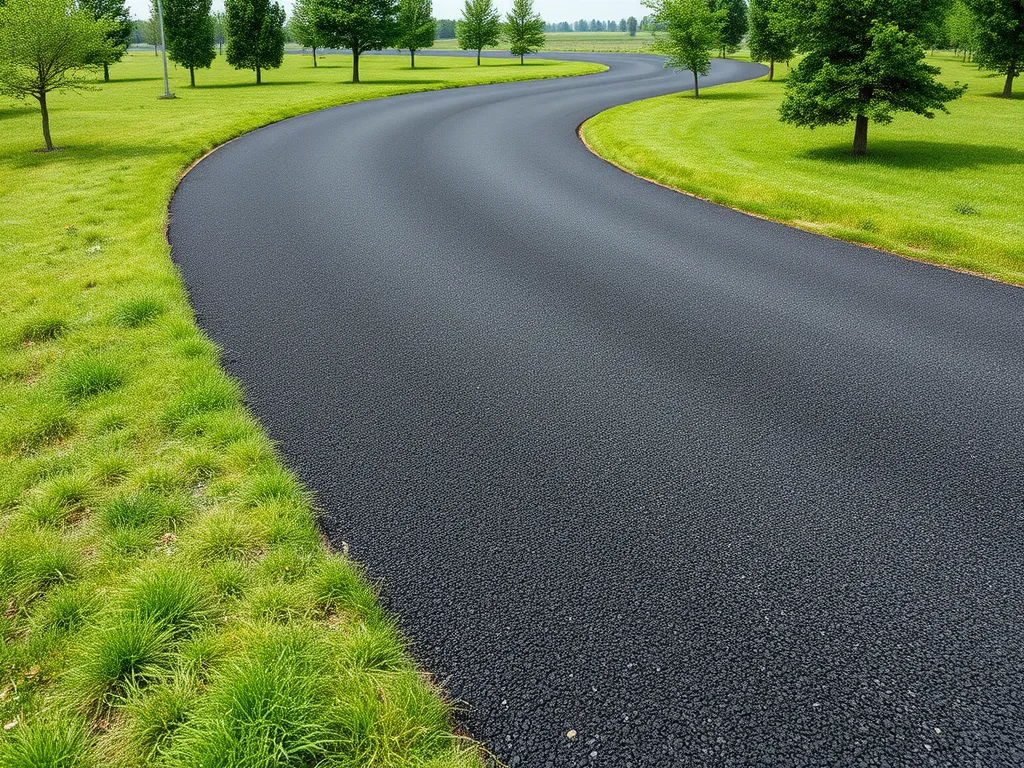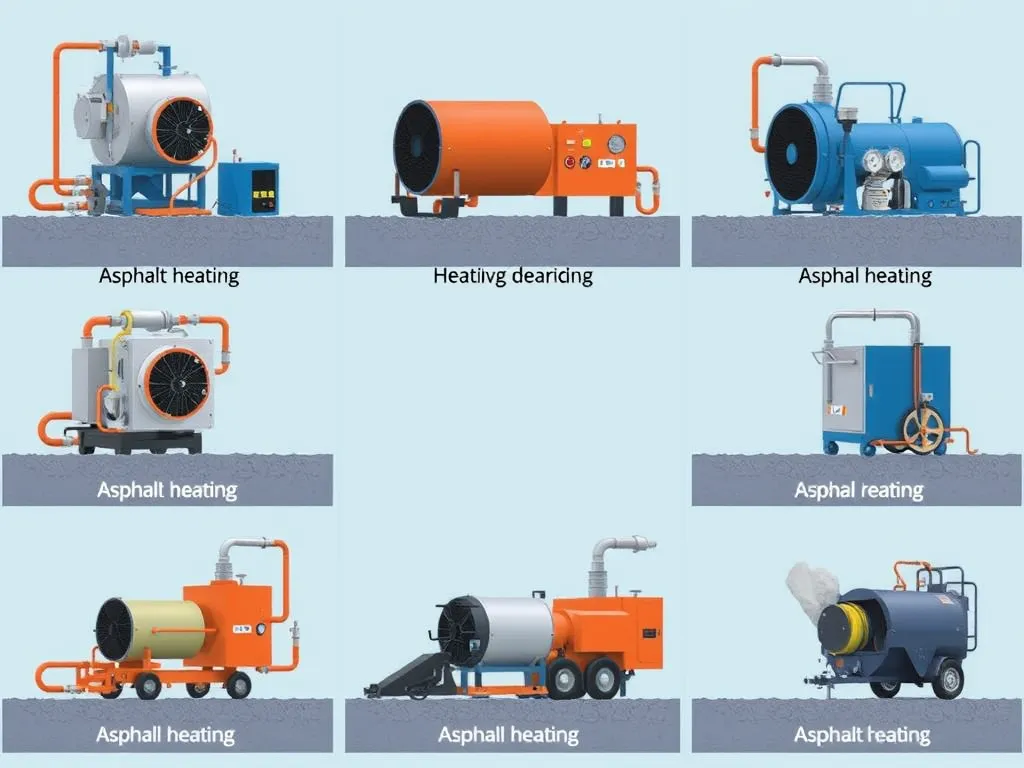Bitumen in Eco-friendly Construction: Sustainable Asphalt Solutions
Published on: September 23, 2025 | Last Updated: April 14, 2025
Written By: George Voss
Bitumen, a sticky petroleum binder used in 90% of paved roads worldwide, now anchors eco-friendly construction through recycling, bio-alternatives, and energy-efficient methods. This black glue holds asphalt’s crushed stone and sand together but faces scrutiny for its fossil fuel origins. Modern innovations transform it into a sustainable material: Recycled Asphalt Pavement (RAP) reuses old roads, cutting waste by 50%, while warm-mix asphalt slashes production temps from 300°F to 230°F, lowering CO₂ emissions. Bio-bitumen made from algae or pine resin offers renewable options. These methods reduce landfill use, conserve raw materials, and lower project costs by 15-30%.
This article breaks down how bitumen fits into green building. We’ll explore its environmental challenges, like carbon-heavy refining and non-renewable sourcing. You’ll learn key sustainability benchmarks, including recycled content ratios and emission caps. Detailed sections cover practical solutions—RAP blending, plant-based binders, porous pavements—and their real-world uses in roads, roofs, and noise barriers. Cost comparisons show long-term savings, while FAQs tackle safety and renewability. By the end, you’ll see how this age-old material adapts to modern eco-standards.
Contents
- Understanding Bitumen’s Role in Sustainable Asphalt
- Is Bitumen Eco-friendly? Evaluating Sustainability
- Sustainable Asphalt Practices Using Bitumen
- Applications Of Eco-friendly Bitumen in Construction
- Environmental Impacts Of Bitumen in Asphalt
- Cost Considerations for Sustainable Asphalt Solutions
- Frequently Asked Questions (FAQs)
- Closing Thoughts
- Useful References for You:
Understanding Bitumen’s Role in Sustainable Asphalt
Bitumen, a sticky black petroleum byproduct, binds crushed stone and sand in asphalt mixes. For over a century, this viscous liquid has paved roads, driveways, and parking lots. Traditional asphalt contains 4-8% bitumen by weight, creating waterproof surfaces that last 15-20 years with proper maintenance. PG (Performance-Graded) binders, developed under the Superpave system, optimize bitumen’s temperature resistance for local climates.
Defining Bitumen and Its Traditional Use in Asphalt
Bitumen acts as asphalt’s glue, holding aggregates together while flexing under traffic loads. Derived from crude oil refining, it’s graded by viscosity and penetration depth. Standard mixes require heating to 280-325°F during production, ensuring workability. While effective, conventional methods use 3.5-4.5 gallons of fuel per ton of asphalt produced, contributing to CO₂ emissions.
Aligning Bitumen With Eco-friendly Construction Goals
The asphalt industry now targets 30% lower emissions by 2030 through sustainable bitumen practices. Recycled asphalt pavement (RAP) incorporates 15-30% reclaimed materials, reactivating aged bitumen with rejuvenators. Bio-based binders from algae, vegetable oils, or lignin cut fossil fuel reliance—some biobitumen blends reduce mixing temperatures by 50°F, slashing energy use. Warm mix asphalt technologies like foaming or chemical additives lower production temps to 220-250°F, trimming fuel costs by 20%.
New polymer-modified bitumen extends pavement life by 40%, delaying resource-intensive repairs. Permeable asphalt designs with open-graded mixes allow stormwater infiltration, reducing runoff pollution by up to 80%. These innovations align with LEED credits and global green building standards.
The shift toward eco-friendly bitumen raises questions about its true sustainability. Let’s examine the data behind its environmental footprint.
Is Bitumen Eco-friendly? Evaluating Sustainability
Bitumen’s environmental impact sparks debate. While asphalt pavements last decades, traditional production methods raise concerns. Let’s break down the challenges and solutions shaping sustainable bitumen use.
Challenges Of Conventional Bitumen in Asphalt Production
Standard bitumen relies on petroleum refining, emitting 1.95 million metric tons of CO₂ annually in the U.S. alone. Production demands 300-350°F temperatures, burning fossil fuels. PG binders (Performance Graded) and Superpave mixes enhance durability but lack eco-design. During placement, volatile organic compounds (VOCs) like benzene release at 0.5-2.0 kg per ton of asphalt. Non-renewable sourcing and limited recycling rates (under 20% globally) compound waste issues.
Key Criteria for Eco-friendly Bitumen
Five metrics define sustainable bitumen:
Energy Efficiency: Warm mix asphalt (WMA) slashes production temps by 50%, cutting fuel use. Material Sourcing: Bioasphalt blends 30% recycled asphalt pavement (RAP) or biobitumen from lignin or algae. Emissions: Low-VOC binders reduce airborne toxins by 60%. Durability: Polymer-modified bitumen extends pavement life to 25+ years, lowering replacement needs. Circular Design: Full recyclability through methods like cold in-place recycling (CIR).
Bio-based additives in green asphalt—think soybean oil or pine resin—now meet AASHTO M 332 specs, matching traditional strength at half the carbon cost.
Meeting these benchmarks paves the way for next-gen methods like self-healing asphalt and carbon-capture binders. Let’s explore how builders implement these solutions today.

Sustainable Asphalt Practices Using Bitumen
Modern construction demands methods that balance performance with environmental stewardship. Bitumen plays a key role in advancing sustainable asphalt solutions through innovative reuse, bio-alternatives, energy efficiency, and durability upgrades.
Recycled Asphalt Pavement (RAP) and Bitumen Reuse
Recycled asphalt pavement (RAP) mixes crushed old asphalt with fresh bitumen, reusing up to 30-50% of existing materials. This cuts virgin aggregate demand and lowers bitumen use by 15-20%. PG-graded binders ensure recycled blends meet strict performance specs for rutting or cracking resistance. Projects like California’s I-710 Freeway saved $12 million using 250,000 tons of RAP.
Bio-based Bitumen: Biobinders and Bio-asphalt
Bio-asphalt replaces petroleum-based bitumen with renewable sources like algae, lignin, or vegetable oil. Shell’s Bitumen Leaf—a blend of algae oil and traditional binder—cuts CO₂ emissions by 20%. The EU’s BioRePavation project achieved 50% bio-content in test roads, matching conventional asphalt’s load-bearing capacity at 3,000 MPa stiffness.
Warm Mix Asphalt: Reducing Energy Consumption
Warm mix asphalt (WMA) lowers production temps from 300-350°F to 250-275°F, slashing energy use by 20-35%. Foaming technologies or additives like Evotherm allow easier compaction, reducing fuel consumption by 1.2 gallons per ton. Over 40% of U.S. asphalt plants now use WMA, cutting annual CO₂ emissions by 1 million tons.
Bitumen Modification for Enhanced Durability
Polymer-modified bitumen (PMB) adds styrene-butadiene-styrene (SBS) or crumb rubber to boost lifespan. PMB roads last 50% longer than standard asphalt, delaying resurfacing cycles to 15-20 years. Rubberized asphalt, made from 2,000 recycled tires per lane-mile, reduces road noise by 5 dB and resists thermal cracking at -22°F.
These advancements set the stage for real-world applications of eco-friendly bitumen across roads, roofing, and urban infrastructure.
Also See: Future Trends in Sustainable Asphalt Materials
Applications Of Eco-friendly Bitumen in Construction
Bitumen drives green building in new ways. Builders mix it with smart tech to cut harm and boost function. Let’s break down four key uses.
Low-carbon Asphalt Roads and Pavements
Roads made with low-carbon asphalt slash CO2 by 15-20%. Mixes blend recycled asphalt (RAP) with bio-based bitumen. Warm mix tech cuts heat needs by 50°F, trimming fuel use. Some states now use 30% RAP in highways. Additives like rubber or plastic waste boost strength and reuse rates.
Permeable Asphalt for Sustainable Drainage
Permeable asphalt stops floods. Its open gaps let rain soak into soil at 300-700 inches per hour. This refills ground water and filters out 80% of street grime. Cities use it in parking lots and bike paths. Less runoff means cleaner streams and lower repair costs.
Bitumen in Eco-friendly Roofing and Insulation
Bitumen roofs reflect heat, cutting AC bills by 20%. Cool roofs with white coatings hit 100°F vs 150°F for black tops. Green roofs add plants over bitumen layers, cutting urban heat. Insulation boards with foam-bitumen cores trap warmth, saving 10% on energy.
Noise-reducing Asphalt Surfaces
Rubber-bitumen roads drop noise by 5-10 decibels. Crumb rubber from old tires binds with bitumen, damping tire hum. Porous surfaces eat sound waves. Europe uses this on 75% of highways near homes. Quieter streets boost health and land value.
Bitumen’s green uses span ground to roof. But how do these choices shape the planet long-term? Let’s weigh the full eco footprint next.

Environmental Impacts Of Bitumen in Asphalt
Bitumen plays a key role in road building but raises eco-concerns. Let’s break down its effects and fixes.
Carbon Footprint Of Bitumen Production
Making bitumen adds 158 lbs of CO₂ per ton. Most comes from heating crude oil to 300-350°F. This step eats 75% of the energy used in asphalt plants. New methods like warm mix asphalt cut temps by 50°F, slashing fuel use by 20%.
Mitigating Environmental Hazards in Asphalt Use
Hot bitumen releases fumes with VOCs. Three fixes work best:
- Mix in 30-50% recycled asphalt (RAP)
- Use porous asphalt to filter stormwater
- Add rubber from old tires to binders
These steps cut waste by 90% in some U.S. states.
Bitumen’s Non-renewable Status and Alternatives
Bitumen comes from oil – a finite resource. Bio-based options now exist:
- Algae binders (tested in Dutch bike paths)
- Pine resin mixes (used in Spain’s highways)
- Recycled plastic bits in asphalt
Shell’s “Bio-bitumen” needs 40% less heat than regular grades.
Balancing eco-goals with budget needs drives the next phase of green asphalt work.
Cost Considerations for Sustainable Asphalt Solutions
Balancing environmental goals with budget realities drives innovation in bitumen-based construction. New technologies prove eco-friendly asphalt can compete financially while delivering long-term value.
Economic Viability Of Recycled Asphalt
Recycled asphalt pavement (RAP) mixes up to 40% reclaimed materials with virgin bitumen. This cuts material costs by $3-$5 per ton and reduces landfill fees by 95%. Federal Highway Administration studies show RAP projects lower initial expenses by 15-30% versus traditional asphalt. PG binders (performance-graded polymers) enhance recycled blends, meeting Superpave standards for load-bearing capacity. Life-cycle assessments reveal RAP roads last 20% longer due to aged bitumen’s stiffness, slashing maintenance budgets. Carbon credit programs add further savings, with 1 ton of RAP reducing CO₂ by 0.03 tons.
Long-term Savings With Bio-based Bitumen
Bio asphalt made from lignin, algae, or vegetable oils costs 8-12% more upfront than petroleum bitumen. Yet its 35% lower oxidation rate extends pavement life to 25+ years, cutting resurfacing frequency by half. Minnesota DOT trials show bio-based roads require 40% fewer repairs over two decades. Tax incentives like the U.S. BioPreferred Program offset 7-10% of installation costs. Warm-mix bio asphalt compounds savings, using 20% less energy during production. Modified biobitumen also resists thermal cracking at -22°F, reducing winter damage claims.
These advances position sustainable asphalt as a fiscally sound choice. Next, we examine how these cost-efficient materials perform in real-world applications.

Frequently Asked Questions (FAQs)
Is Bitumen Eco-friendly in Asphalt Applications?
Yes, bitumen can be made eco-friendly through various practices such as using recycled asphalt pavement (RAP) and bio-based additives. These methods reduce the carbon footprint and improve sustainability in asphalt applications.
Does Bitumen Pose Environmental Hazards?
Traditional bitumen production and use can release volatile organic compounds (VOCs) and contribute to greenhouse gas emissions. However, innovations like warm mix asphalt and the use of recycled materials help mitigate these hazards significantly.
What Are the Key Environmental Impacts Of Bitumen?
The primary environmental impacts include CO₂ emissions during production, reliance on non-renewable resources, and the potential release of harmful emissions during installation. Sustainable practices are being developed to minimize these impacts.
Is Bitumen a Renewable Resource for Asphalt?
No, conventional bitumen is derived from petroleum, a non-renewable resource. However, renewable alternatives such as bio-bitumen made from plant materials and natural sources are being explored to supplement traditional bitumen in asphalt applications.
How Cost-effective is Eco-friendly Bitumen?
Eco-friendly bitumen options like recycled asphalt can save costs due to reduced material prices and lowered maintenance expenses. Although bio-based bitumen may have higher initial costs, it often leads to long-term savings through increased durability and fewer repairs.
What is Bio Bitumen and How is It Used?
Bio bitumen, also known as bio-asphalt, is made from renewable materials such as algae, lignin, or vegetable oils. It can be used in the same applications as traditional bitumen, providing similar or improved performance with a lower environmental impact.
Closing Thoughts
Bitumen plays a pivotal role in eco-friendly construction. Its versatility allows for the creation of sustainable asphalt solutions that meet both environmental and economic needs. From recycled asphalt pavement (RAP) to bio-based options, innovative practices are transforming the asphalt industry.
Asphalt’s potential for reducing carbon footprints and enhancing durability makes it a favorable choice for modern construction. By leveraging advancements in technology, such as warm mix asphalt and permeable surfaces, the negative impacts traditionally associated with bitumen can be mitigated.
Utilizing eco-friendly bitumen not only aligns with sustainability goals but also presents long-term cost benefits. As we continue to explore sustainable practices, the construction industry can significantly improve its environmental footprint.
For more information on sustainable asphalt solutions and how you can implement them, visit Asphalt Calculator USA.
Useful References for You:
- Transportation Research Board (TRB, Peer-Reviewed Research & Circulars)
- Sustainability – Eurobitume
- Is Bitumen Eco-Friendly? | Bitumen Sustainability
- Eco-friendly Materials for a New Concept of Asphalt Pavement – ScienceDirect
- Eco-Friendly Bitumen Market – A Global Market and Regional Analysis: Focus on Applications, Products, Grades, Patent Analysis, and Country Analysis – Analysis and Forecast, 2020-2025


